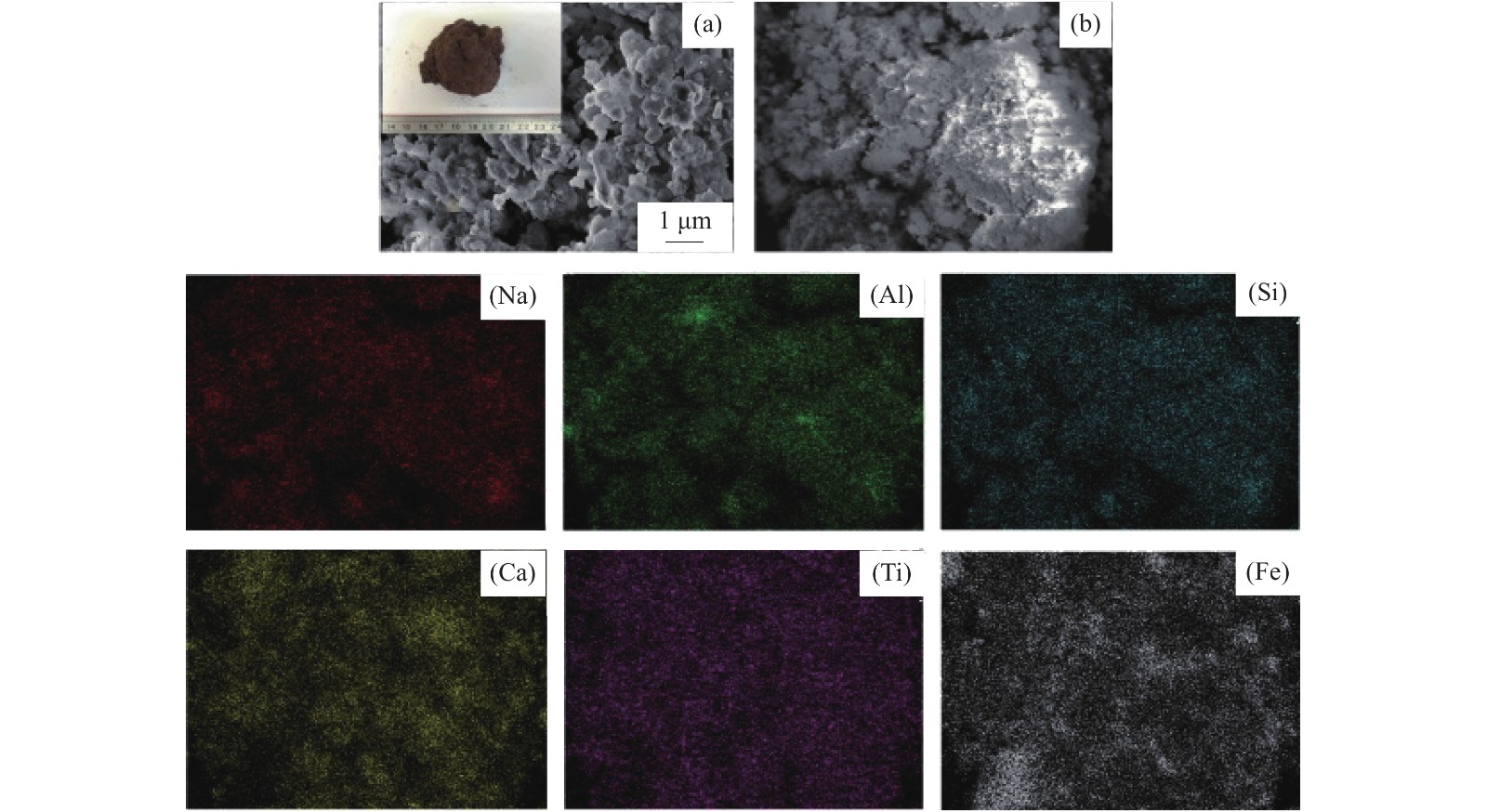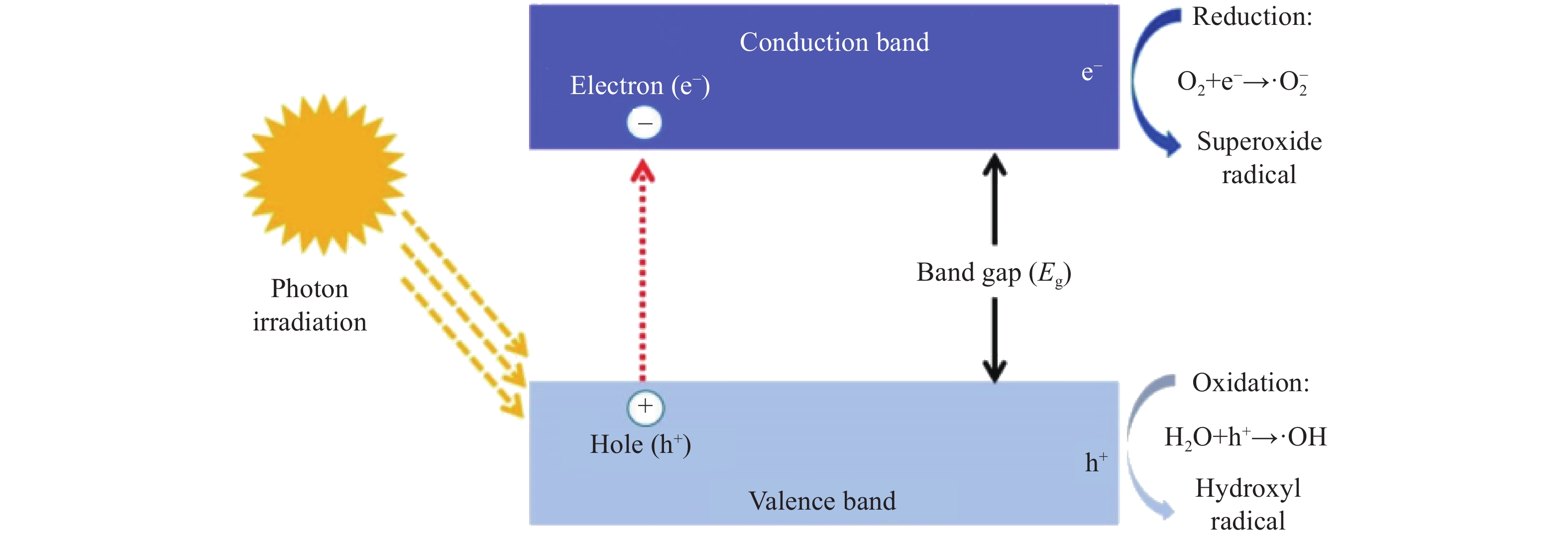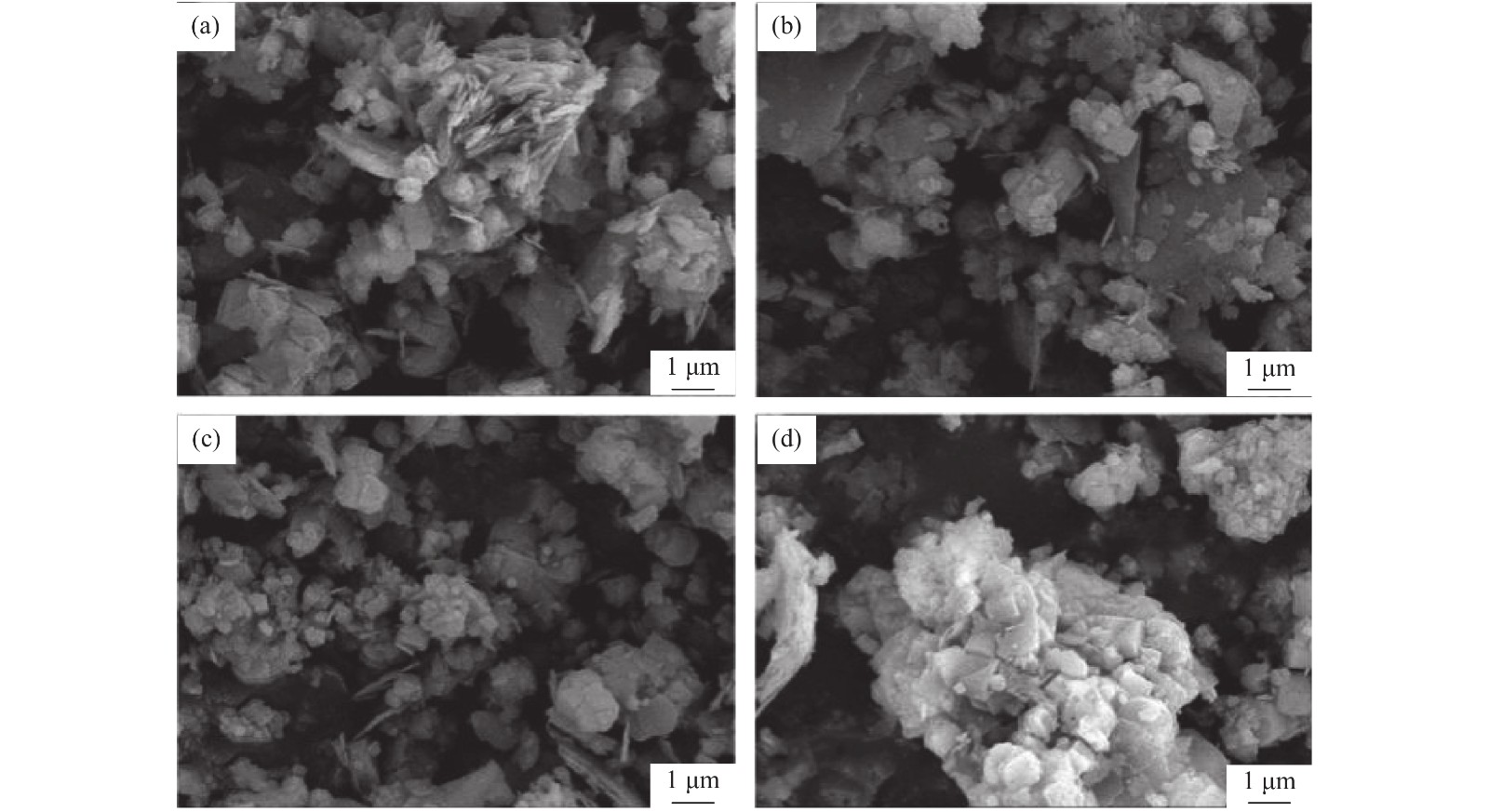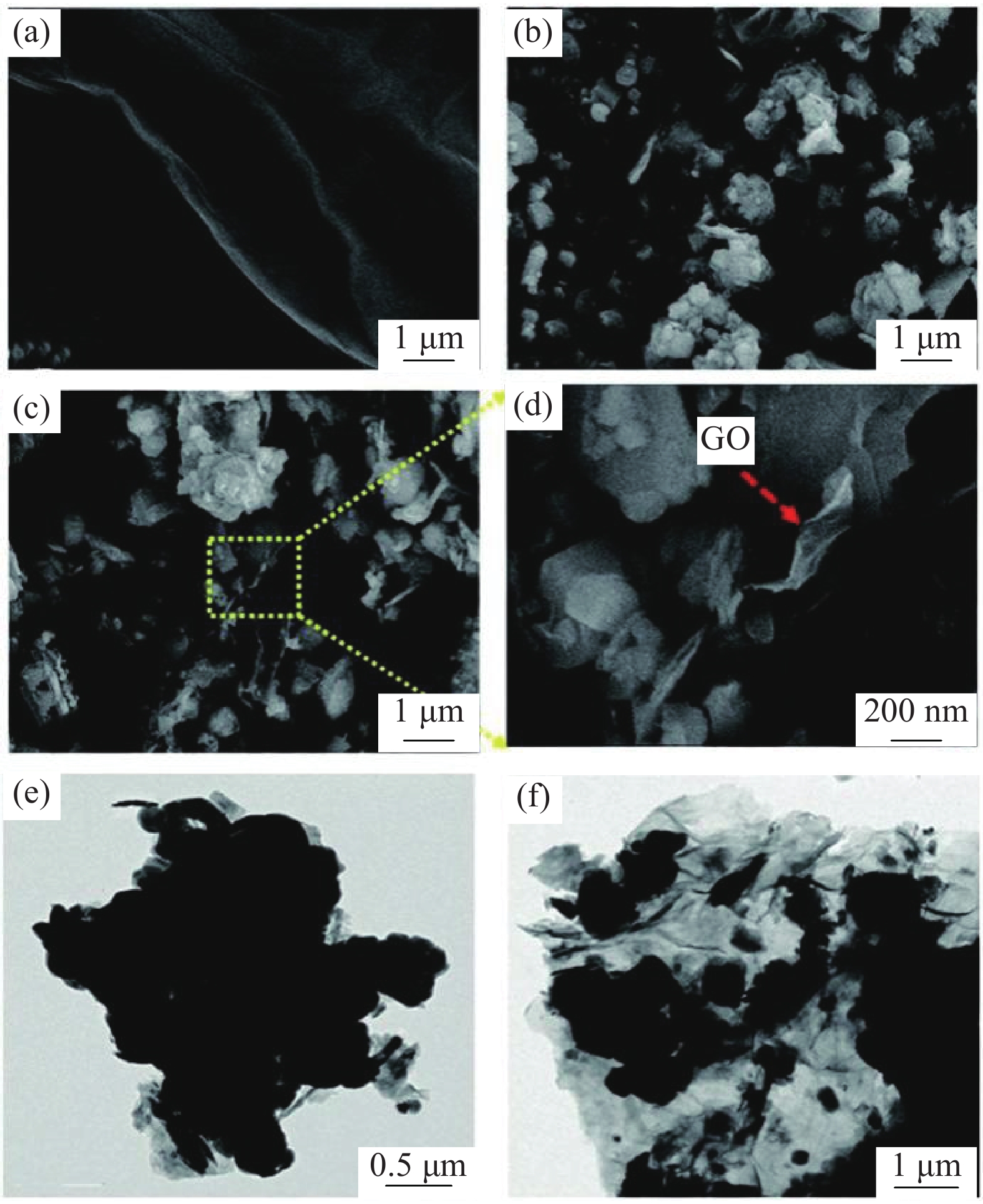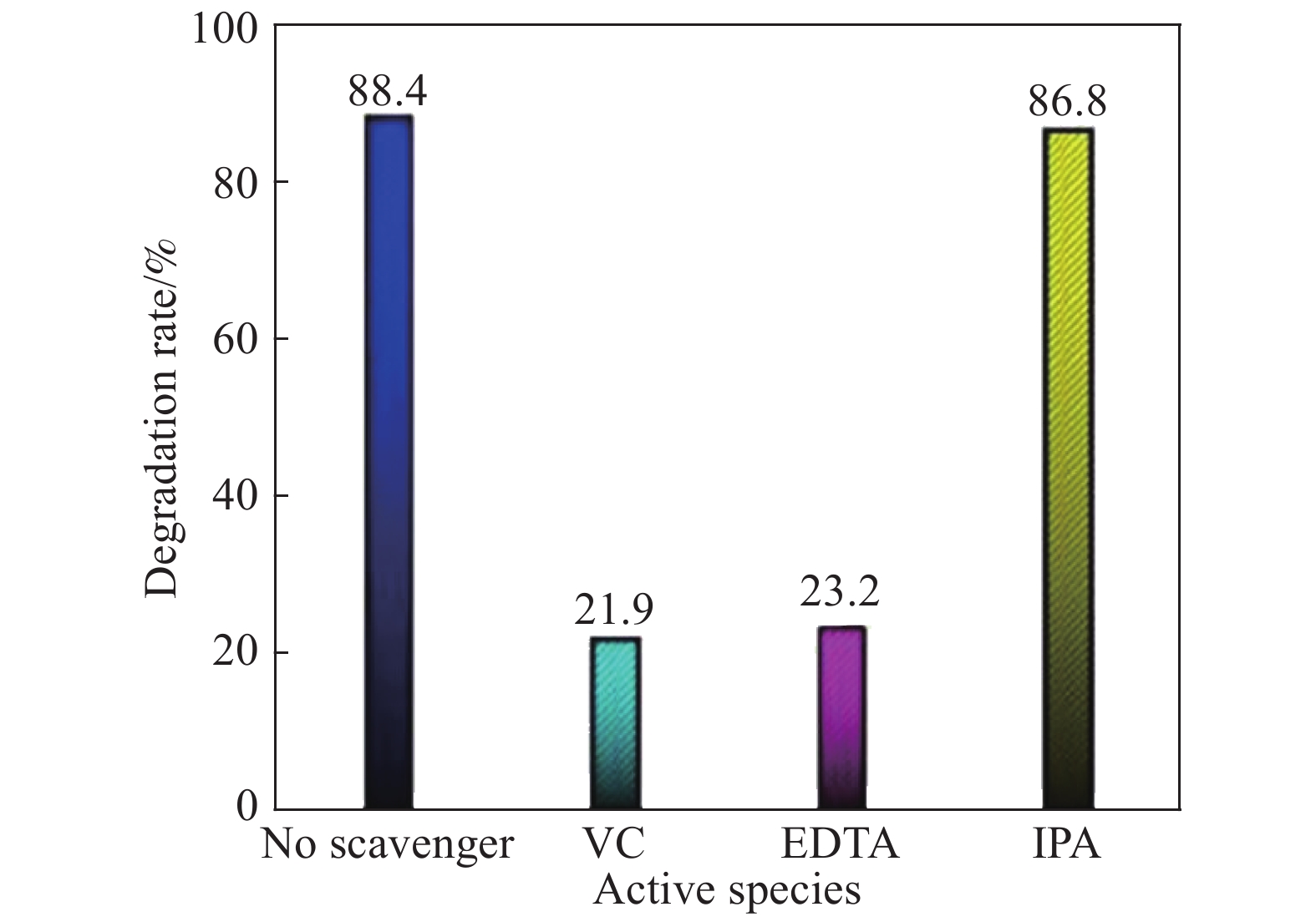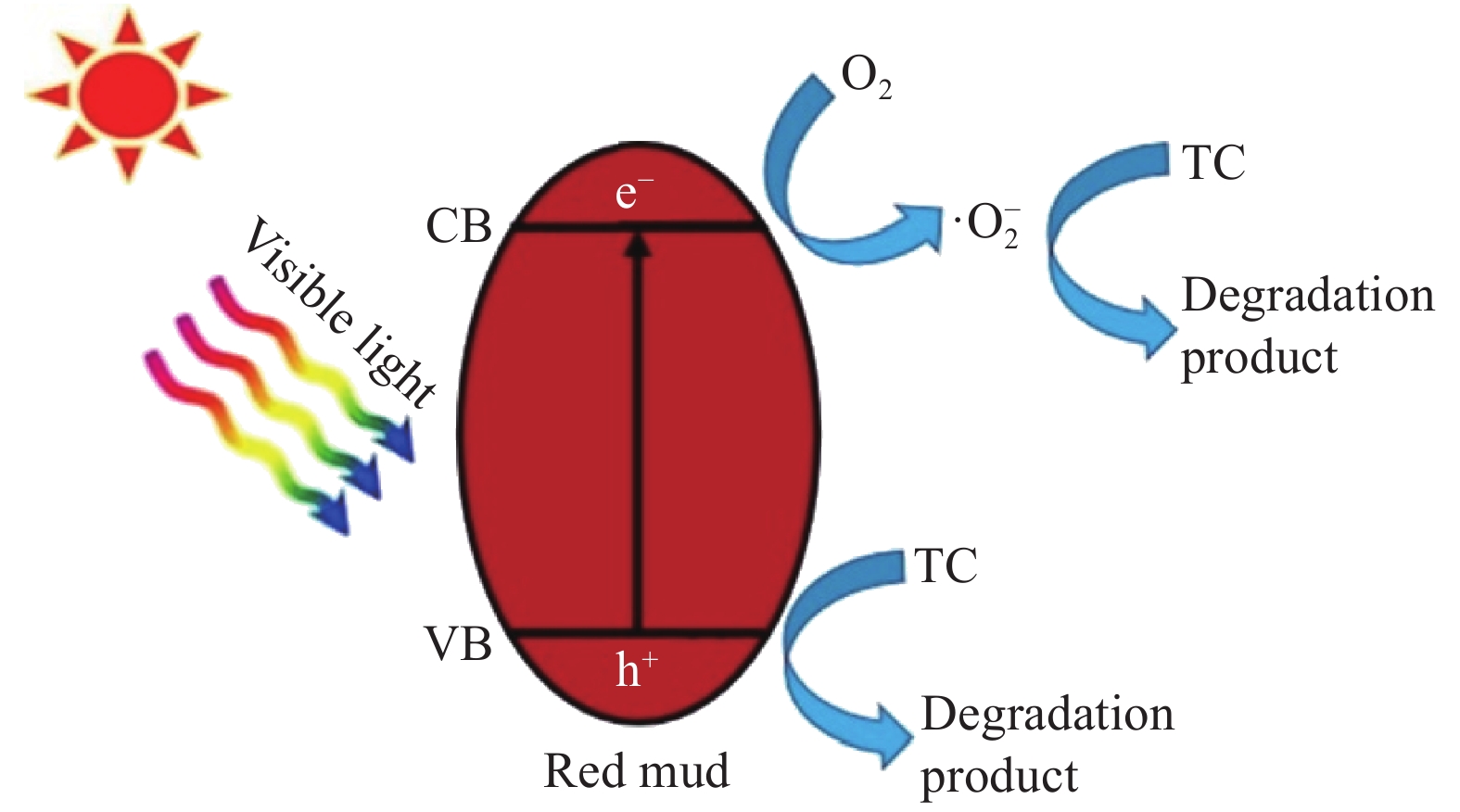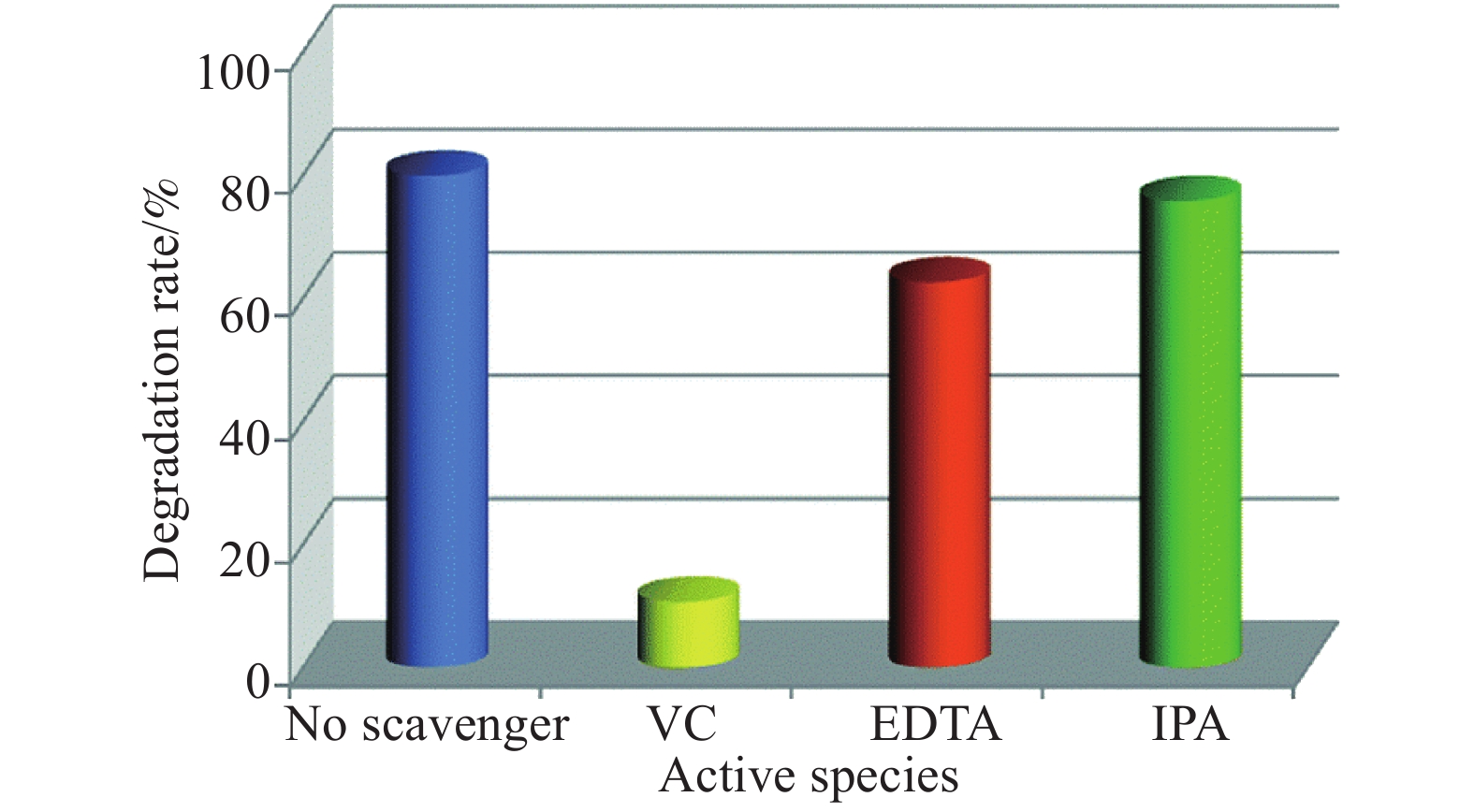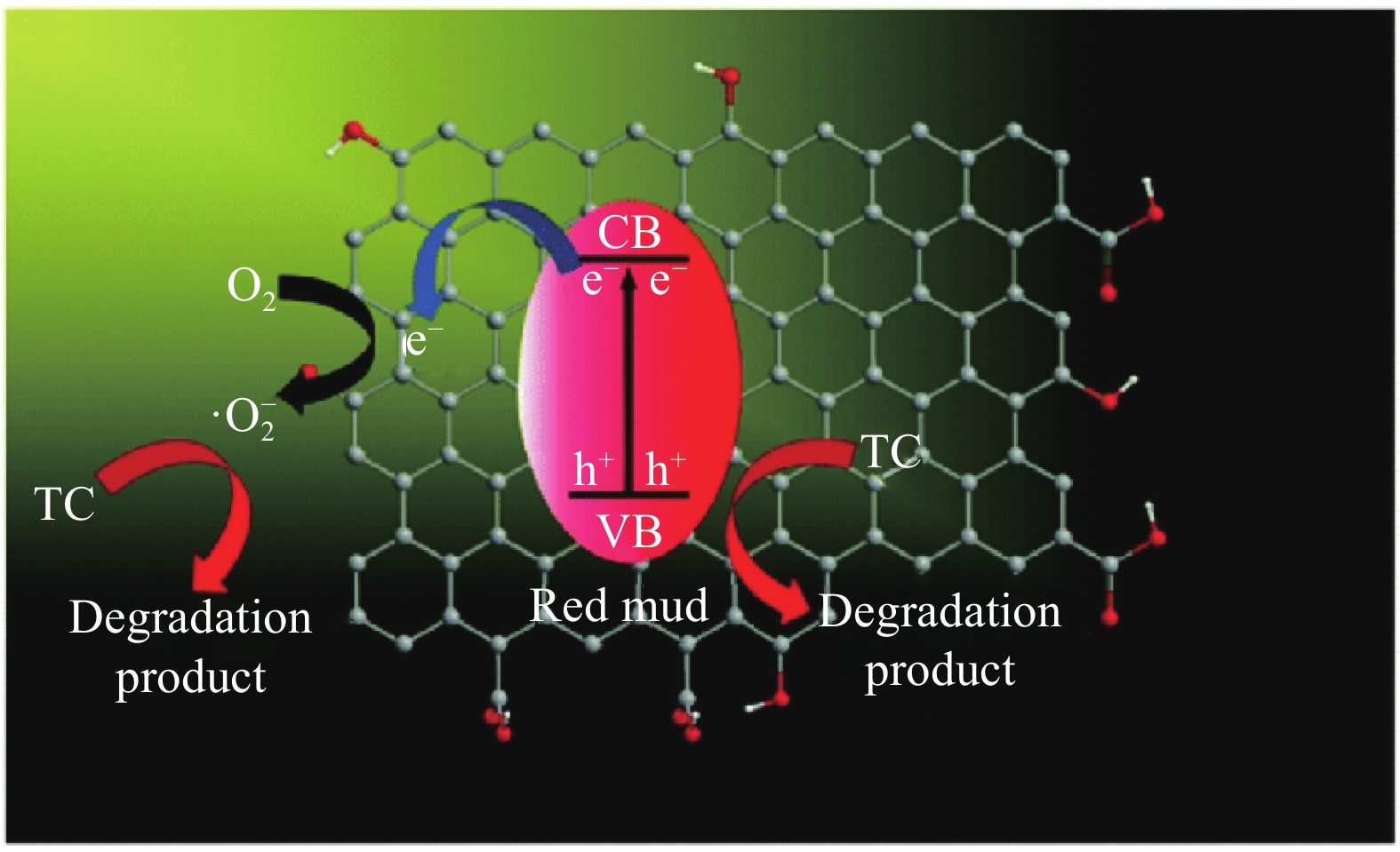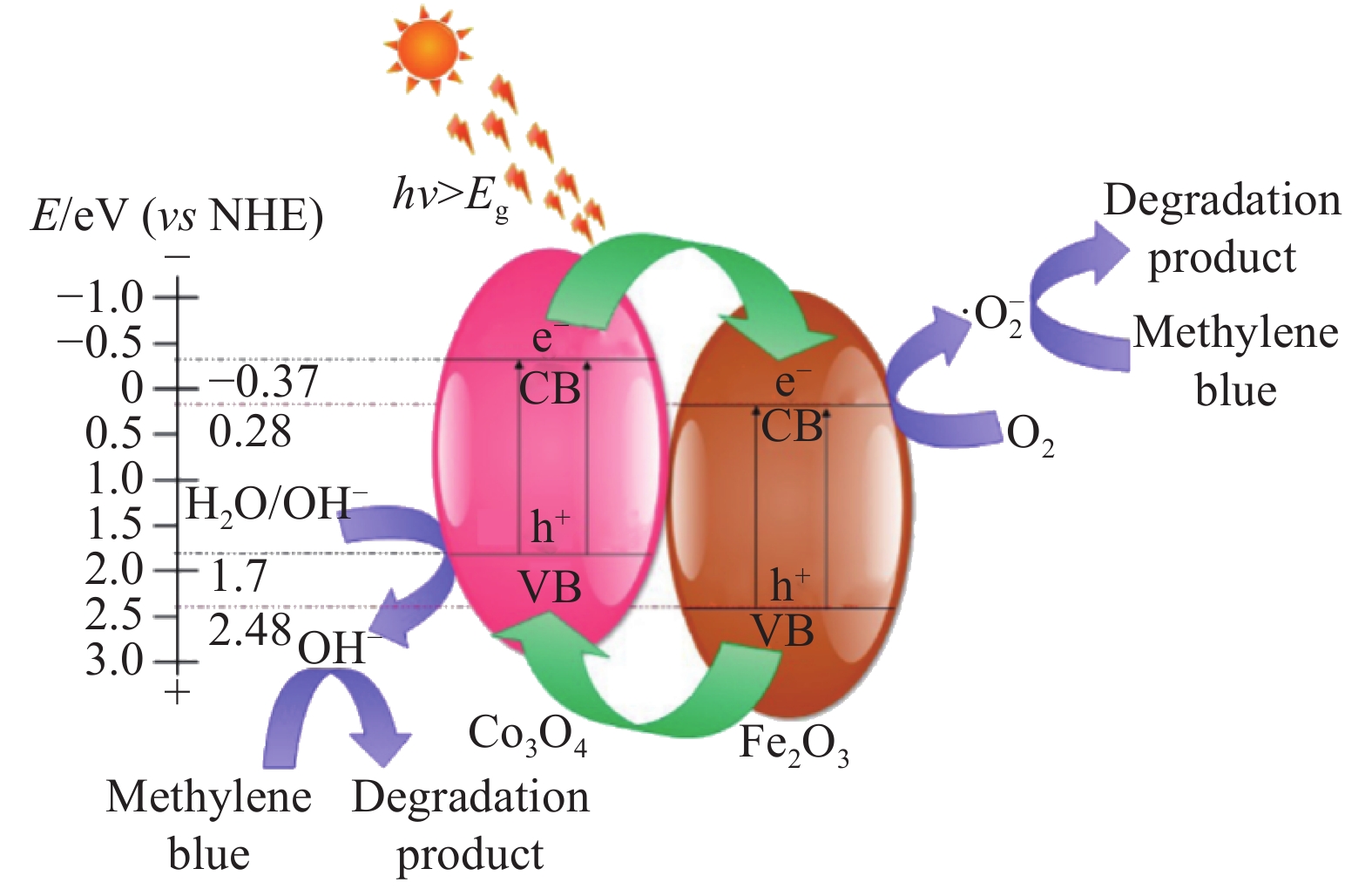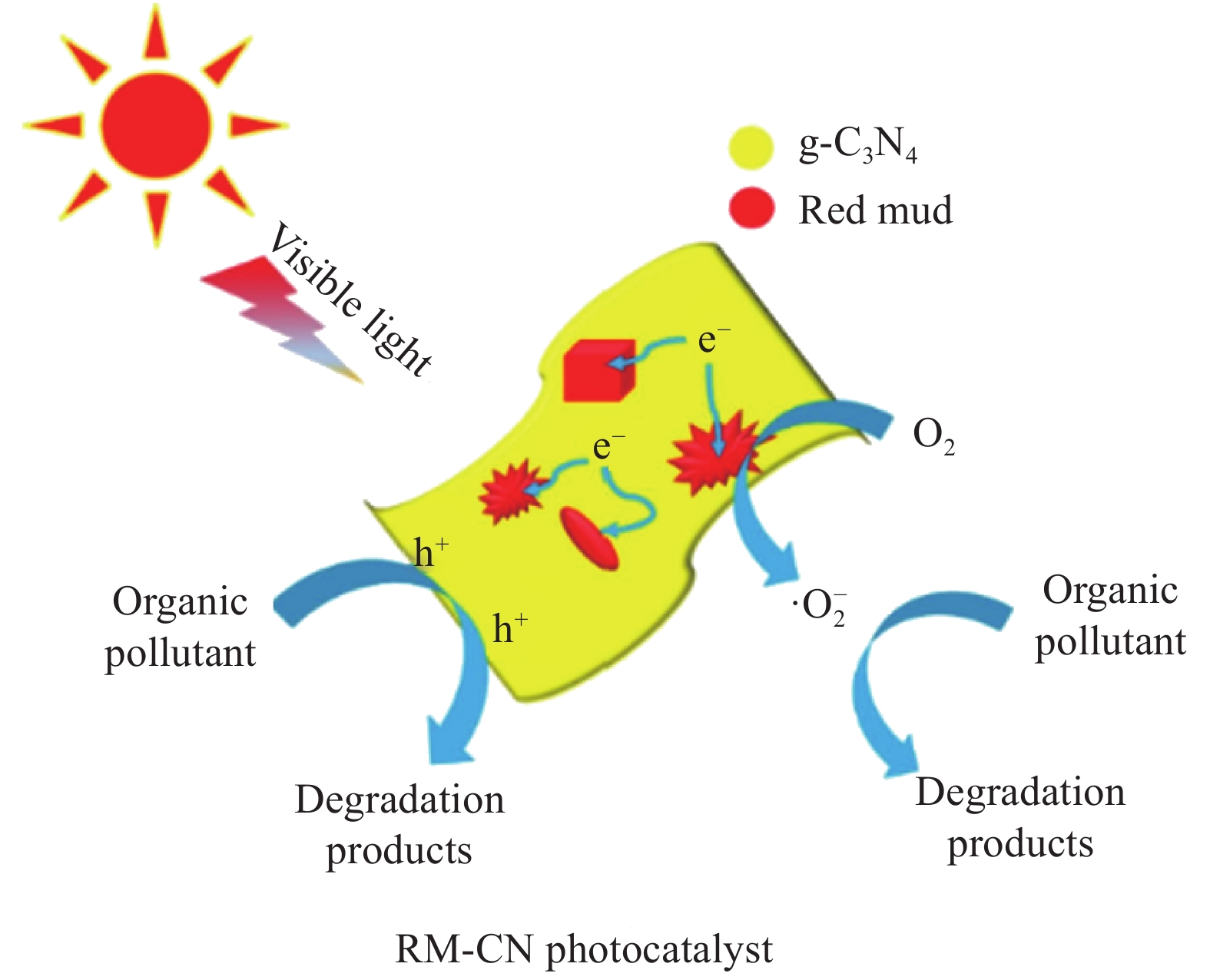Review on the application and development of red mud-based photocatalytic materials for degradation of organic pollutants in water
-
摘要: 光催化作為一種低成本且高效安全的環境凈化技術,被認為是全球能源危機和環境污染問題最好的解決方式之一。赤泥作為一種固廢不僅含有豐富的鐵氧化物,且具有較高的比表面積、孔結構等特點,近年來,赤泥基光催化材料在光催化降解水中有機污染物的研究中備受關注。本文介紹了赤泥的特性,概括了赤泥基光催化材料的制備方法,總結了赤泥基光催化材料在光催化降解水中有機污染物方面的應用,闡述了赤泥基光催化材料催化降解水中有機污染物的機理,探討了現有赤泥基光催化材料存在的問題。最后,基于以往的研究結果對赤泥基光催化材料未來的發展趨勢提出了展望及建議。Abstract: Red mud is a strong alkaline solid waste that is discharged from alumina production process. Its cumulative storage and annual emission are huge with about 0.8–1.5 t of red mud emitted for 1 t of alumina produced. As of 2018, the global cumulative emissions of red mud were about 4 billion t and increased by 120 million tons annually. In China, about 100 million tons of red mud are discharged annually and the comprehensive utilization rate of red mud is about 4%, which is mainly stored in the Red Mud Dam. This often causes serious damage to the surrounding environment, as the red mud with high alkalinity and radioactivity raises the alkalization of soil and leaching into the groundwater through diffusion and infiltration. The comprehensive utilization of red mud is mainly to prepare building materials, ceramics materials, new functional materials, and recover valuable metals. As a low-cost, efficient, and safe environment-friendly environmental purification technology, photocatalytic technology is considered to be one of the best solutions to the severe energy crisis and environmental pollution problems that the world is currently facing. Semiconductor photocatalytic materials (such as Fe2O3, TiO2, ZnO) have been widely studied in the degradation of organic pollutants in water. Red mud is rich in iron oxides and has a high specific surface area and pore structure. In recent years, red mud-based photocatalytic materials have attracted much attention in the photocatalytic degradation of organic pollutants in water. In this paper, the characteristics of red mud were introduced. The preparation methods of red mud-based photocatalytic materials were summarized and its application in the photocatalytic degradation of organic pollutants in water was summarized. The mechanism of red mud-based photocatalytic materials for degradation of organic pollutants in water was described, and the existing problems of these materials were discussed. Finally, the future development trend of red mud-based photocatalytic materials was proposed based on previous research results.
-
Key words:
- red mud /
- iron oxide /
- photocatalysis /
- organic pollutants /
- degradation
-
圖 6 赤泥、氧化石墨烯、赤泥–氧化石墨烯材料的SEM及赤泥–氧化石墨烯材料的TEM圖。(a)氧化石墨烯;(b)赤泥;(c)赤泥–氧化石墨烯材料;(d)赤泥–氧化石墨烯材料;(e)和(f)赤泥–氧化石墨烯材料TEM圖[28]
Figure 6. SEM images of red mud, graphene oxide, red mud–graphene oxide material, and TEM images of red mud–graphene oxide material: (a) graphene oxide; (b) red mud; (c) red mud–graphene oxide material; (d) red mud–graphene oxide material; (e) and (f) TEM images of red mud–graphene oxide material[28]
圖 12 赤泥–g-C3N4光催化降解四環素活性物質捕獲實驗。(a)捕獲實驗的結果;(b)黑暗和光照射下DMPO捕獲
$ \cdot {\rm{O}}_2^ - $ 的ESR光譜[35]Figure 12. Trapping experiments of active species during the photocatalytic degradation of tetracycline by red mud–g-C3N4: (a) results of trapping experiments; (b) the ESR spectra of
$ \cdot {\rm{O}}_2^ - $ trapped by DMPO under dark and light irradiation[35]表 1 赤泥基光催化材料的制備方法
Table 1. Preparation methods of red mud-based photocatalytic materials
Name Methods Main experimental steps Reference Red mud photocatalytic material Calcination modification The red mud photocatalyst material was obtained by drying, grinding, sieving, calcination, and grinding for red mud. [24] Red mud photocatalytic material Acid modification The red mud photocatalyst material was prepared by acid leaching, neutralization, hydrothermal synthesis, and washing for red mud. [25] Red mud photocatalytic material Acid modification The red mud photocatalysis material was obtained by drying, grinding, acid leaching, and washing for red mud. [26] Red mud photocatalytic material Calcination-acid modification The red mud photocatalytic material was prepared by drying, grinding, acid leaching, and calcination for red mud. [27] Red mud–graphene oxide photocatalytic material Composite modification The red mud–graphene oxide photocatalytic material was prepared by drying, grinding, compounding with graphene, and filtering for red mud. [28] Red mud–Cphotocatalytic material Composite modification The red mud–C photocatalytic material was obtained by drying, washing, compounding with ethanol, calcination, and grinding for red mud. [29] Red mud–SiO2 photocatalytic material Composite modification The red mud–SiO2 photocatalytic material was prepared by acid leaching, washing, compounding with cetyltrimethylammonium bromide, ammonia water and ethyl orthosilicate, and calcination for red mud. [30] Red mud–glass fiber photocatalytic material Composite modification The red mud–glass fiber photocatalytic material was prepared by dispersing, smearing on the surface of fiber glass, and calcination for red mud. [31] Red mud–Fe photocatalytic material Composite modification The red mud–Fe photocatalytic material was prepared by dispersing, compounding with FeCl3·6H2O, drying, washing, calcination, and grinding for red mud. [32] Red mud–Co photocatalytic material Composite modification The red mud–Co photocatalytic material was prepared by dealkalization, calcination, compounding with Co(NO3)2·6H2O, drying, calcination, and grinding for red mud. [33] Red mud–TiO2 photocatalytic material Composite modification The red mud–TiO2 photocatalytic material was prepared by acid leaching, compounding with TiO2, dispersing, filtering, calcination, and grinding for red mud. [34] Red mud–g-C3N4 photocatalytic material Composite modification The red mud–g-C3N4 photocatalytic material was prepared by drying, grinding, compounding with melamine, calcination, and grinding for red mud. [35] Red mud–C–TiO2 photocatalytic material Composite modification The red mud–C–TiO2 photocatalytic material was obtained by calcination reduction, compounding with acetone, compounding with TiO2, drying, calcination,
and grinding for red mud.[36] 259luxu-164<th id="5nh9l"></th> <strike id="5nh9l"></strike> <th id="5nh9l"><noframes id="5nh9l"><th id="5nh9l"></th> <strike id="5nh9l"></strike> <progress id="5nh9l"><noframes id="5nh9l"> <th id="5nh9l"><noframes id="5nh9l"> <th id="5nh9l"></th> <strike id="5nh9l"><noframes id="5nh9l"><span id="5nh9l"></span> <progress id="5nh9l"><noframes id="5nh9l"> <span id="5nh9l"><noframes id="5nh9l"><span id="5nh9l"></span> <strike id="5nh9l"><noframes id="5nh9l"><strike id="5nh9l"></strike> <span id="5nh9l"><noframes id="5nh9l"> <span id="5nh9l"><noframes id="5nh9l"> <span id="5nh9l"></span> <span id="5nh9l"><video id="5nh9l"></video></span> <th id="5nh9l"><noframes id="5nh9l"><th id="5nh9l"></th> <progress id="5nh9l"><noframes id="5nh9l"> -
參考文獻
[1] Sousa J C G, Ribeiro A R, Barbosa M O, et al. a review on environmental monitoring of water organic pollutants identified by EU guidelines. J Hazard Mater, 2018, 344: 146 doi: 10.1016/j.jhazmat.2017.09.058 [2] Li S N, Ma R X, Wang C Y. Solid-phase synthesis of Cu2MoS4 nanoparticles for degradation of methyl blue under a halogen-tungsten lamp. Int J Miner Metall Mater, 2018, 25(3): 310 doi: 10.1007/s12613-018-1574-y [3] Zheng F, Guo M, Zhang M. Hydrothermal preparation of WO3 nanorod arrays and their photocatalytic properties. J Univ Sci Technol Beijing, 2014, 36(6): 810鄭鋒, 郭敏, 張梅. 水熱法制備WO3納米棒陣列及其光催化性能. 北京科技大學學報, 2014, 36(6):810 [4] Pathania D, Katwal R, Kaur H. Enhanced photocatalytic activity of electrochemically synthesized aluminum oxide nanoparticles. Int J Miner Metall Mater, 2016, 23(3): 358 doi: 10.1007/s12613-016-1245-9 [5] Zhang G H, Zhang X Q, Meng Y, et al. Layered double hydroxides-based photocatalysts and visible-light driven photodegradation of organic pollutants: a review. Chem Eng J, 2020, 392: 123684 doi: 10.1016/j.cej.2019.123684 [6] Matafonova G, Batoev V. Recent advances in application of UV light-emitting diodes for degrading organic pollutants in water through advanced oxidation processes: a review. Water Res, 2018, 132: 177 doi: 10.1016/j.watres.2017.12.079 [7] Sudhaik A, Raizada P, Shandilya P, et al. Review on fabrication of graphitic carbon nitride based efficient nanocomposites for photodegradation of aqueous phase organic pollutants. J Ind Eng Chem, 2018, 67: 28 doi: 10.1016/j.jiec.2018.07.007 [8] Sharma K, Dutta V, Sharma S, et al. Recent advances in enhanced photocatalytic activity of bismuth oxyhalides for efficient photocatalysis of organic pollutants in water: a review. J Ind Eng Chem, 2019, 78: 1 doi: 10.1016/j.jiec.2019.06.022 [9] Kumari P, Bahadur N, Dumée L F. Photo-catalytic membrane reactors for the remediation of persistent organic pollutants–a review. Sep Purif Technol, 2020, 230: 115878 doi: 10.1016/j.seppur.2019.115878 [10] Lum P T, Foo K Y, Zakaria N A, et al. Ash based nanocomposites for photocatalytic degradation of textile dye pollutants: a review. Mater Chem Phys, 2020, 241: 122405 doi: 10.1016/j.matchemphys.2019.122405 [11] Li H, Liu X M, Zhao X B, et al. Medium-low temperature reduction of high-iron Bayer process red mud using biomass pine sawdust. Chin J Eng, 2017, 39(9): 1331李恒, 劉曉明, 趙喜彬, 等. 生物質松木鋸末中低溫還原高鐵拜耳法赤泥. 工程科學學報, 2017, 39(9):1331 [12] Mukiza E, Zhang L L, Liu X M, et al. Utilization of red mud in road base and subgrade materials: a review. Resour Conserv Recycl, 2019, 141: 187 doi: 10.1016/j.resconrec.2018.10.031 [13] Zhang S, Yi J J, Chen J R, et al. Spatially confined Fe2O3 in hierarchical SiO2@TiO2 hollow sphere exhibiting superior photocatalytic efficiency for degrading antibiotics. Chem Eng J, 2020, 380: 122583 doi: 10.1016/j.cej.2019.122583 [14] Sun Z H, Guo M, Zhang M. Hydrothermal synthesis of nanostructured iron oxide visible-light photocatalysts from mill scales. Chin J Eng, 2015, 37(1): 70孫澤輝, 郭敏, 張梅. 由鐵鱗制備納米氧化鐵可見光光催化劑. 工程科學學報, 2015, 37(1):70 [15] Mirmasoomi S R, Ghazi M M, Galedari M. Photocatalytic degradation of diazinon under visible light using TiO2/Fe2O3 nanocomposite synthesized by ultrasonic-assisted impregnation method. Sep Purif Technol, 2017, 175: 418 doi: 10.1016/j.seppur.2016.11.021 [16] Nuengmatcha P, Porrawatkul P, Chanthai S, et al. Enhanced photocatalytic degradation of methylene blue using Fe2O3/graphene/CuO nanocomposites under visible light. J Environ Chem Eng, 2019, 7(6): 103438 doi: 10.1016/j.jece.2019.103438 [17] Ng T W, Zhang L S, Liu J S, et al. Visible-light-driven photocatalytic inactivation of Escherichia coli by magnetic Fe2O3–AgBr. Water Res, 2016, 90: 111 doi: 10.1016/j.watres.2015.12.022 [18] El-Maghrabi H H, Al-Kahlawy A A, Nada A A, et al. Photocorrosion resistant Ag2CO3@Fe2O3/TiO2–NT nanocomposite for efficient visible light photocatalytic degradation activities. J Hazard Mater, 2018, 360: 250 doi: 10.1016/j.jhazmat.2018.08.002 [19] Mohamed H H. Rationally designed Fe2O3/GO/WO3 Z-Scheme photocatalyst for enhanced solar light photocatalytic water remediation. J Photochem Photobiol A, 2019, 378: 74 doi: 10.1016/j.jphotochem.2019.04.023 [20] Cao J L, Yan Z L, Deng Q F, et al. Homogeneous precipitation method preparation of modified red mud supported Ni mesoporous catalysts for ammonia decomposition. Catal Sci Technol, 2014, 4(2): 361 doi: 10.1039/C3CY00519D [21] Das B, Mohanty K. a review on advances in sustainable energy production through various catalytic processes by using catalysts derived from waste red mud. Renew Energ, 2019, 143: 1791 doi: 10.1016/j.renene.2019.05.114 [22] Feng Y, Wu D L, Liao C Z, et al. Red mud powders as low-cost and efficient catalysts for persulfate activation: pathways and reusability of mineralizing sulfadiazine. Sep Purif Technol, 2016, 167: 136 doi: 10.1016/j.seppur.2016.04.051 [23] Ge J L, Zhang Y F, Heo Y J, et al. Advanced design and synthesis of composite photocatalysts for the remediation of wastewater: a review. Catalysts, 2019, 9(2): 122 doi: 10.3390/catal9020122 [24] Shi W L, Ren H J, Li M Y, et al. Tetracycline removal from aqueous solution by visible-light-driven photocatalytic degradation with low cost red mud wastes. Chem Eng J, 2020, 382: 122876 doi: 10.1016/j.cej.2019.122876 [25] Wang X H, Liu H, Zhou Z H, et al. Study on dispose of dye wastewater by photocatalysts prepared from red mud. Ind Saf Environ Prot, 2012, 38(11): 30 doi: 10.3969/j.issn.1001-425X.2012.11.011王小華, 劉紅, 周志輝, 等. 赤泥制備光催化劑降解染料廢水的研究. 工業安全與環保, 2012, 38(11):30 doi: 10.3969/j.issn.1001-425X.2012.11.011 [26] Ma M J, Wang G Y, Yang Z P, et al. Preparation, characterization, and photocatalytic properties of modified red mud. Adv Mater Sci Eng, 2015, 2015: 907539 [27] Busto R V, Gon?alves M, Coelho L H G. Assessment of the use of red mud as a catalyst for photodegradation of bisphenol A in wastewater treatment. Water Sci Technol, 2016, 74(6): 1283 doi: 10.2166/wst.2016.309 [28] Ren H J, Tang Y B, Shi W L, et al. Red mud modified with graphene oxide for enhanced visible-light-driven photocatalytic performance towards the degradation of antibiotics. New J Chem, 2019, 43(48): 19172 doi: 10.1039/C9NJ04697F [29] Dias F F, Oliveira A A S, Arcanjo A P, et al. Residue-based iron catalyst for the degradation of textile dye via heterogeneous photo-Fenton. Appl Catal B, 2016, 186: 136 doi: 10.1016/j.apcatb.2015.12.049 [30] Rath D, Nanda B, Parida K. Sustainable nano composite of mesoporous silica supported red mud for solar powered degradation of aquatic pollutants. J Environ Chem Eng, 2017, 5(6): 6137 doi: 10.1016/j.jece.2017.11.037 [31] Soldan M, Kobeticova H, Gerulova K. Photocatalytic degradation of methylene blue using glass fibers catalytic layer covered with red mud. J Mater Appl, 2017, 6(1): 23 [32] Hajjaji W, Pullar R C, Labrincha J A, et al. Aqueous Acid Orange 7 dye removal by clay and red mud mixes. Appl Clay Sci, 2016, 126: 197 doi: 10.1016/j.clay.2016.03.016 [33] Sahu M K, Patel R K. Novel visible-light-driven cobalt loaded neutralized red mud (Co/NRM) composite with photocatalytic activity toward methylene blue dye degradation. J Ind Eng Chem, 2016, 40: 72 doi: 10.1016/j.jiec.2016.06.008 [34] Qiu A L, Zhu L Z, Liu J. A Method of Red Mud Activation Modification and Its Application: China Patent, CN201710265875.8. 2018-11-02.邱愛玲, 朱立忠, 劉俊. 一種赤泥活化改性的方法及應用: 中國專利, CN201710265875.8. 2018-11-02. [35] Shi W L, Ren H J, Huang X L, et al. Low cost red mud modified graphitic carbon nitride for the removal of organic pollutants in wastewater by the synergistic effect of adsorption and photocatalysis. Sep Purif Technol, 2020, 237: 116477 doi: 10.1016/j.seppur.2019.116477 [36] Pereira L D O, de Moura S G, Coelho G C M, et al. Magnetic photocatalysts from industrial residues and TiO2 for the degradation of organic contaminants. J Environ Chem Eng, 2019, 7(1): 102826 doi: 10.1016/j.jece.2018.102826 [37] Xu L J, Wang Y D, Liu J, et al. High-efficient visible-light photocatalyst based on graphene incorporated Ag3PO4 nanocomposite applicable for the degradation of a wide variety of dyes. J Photochem Photobiol A, 2017, 340: 70 doi: 10.1016/j.jphotochem.2017.02.022 [38] Deng Z, Zhang X H, Chan K C, et al. Fe-based metallic glass catalyst with nanoporous surface for azo dye degradation. Chemosphere, 2017, 174: 76 doi: 10.1016/j.chemosphere.2017.01.094 [39] Rajeswari A, Vismaiya S, Pius A. Preparation, characterization of nano ZnO-blended cellulose acetate-polyurethane membrane for photocatalytic degradation of dyes from water. Chem Eng J, 2017, 313: 928 doi: 10.1016/j.cej.2016.10.124 [40] Li W C. Occurrence, sources, and fate of pharmaceuticals in aquatic environment and soil. Environ Pollut, 2014, 187: 193 doi: 10.1016/j.envpol.2014.01.015 [41] Liu J L, Wong M H. Pharmaceuticals and personal care products (PPCPs): a review on environmental contamination in China. Environ Int, 2013, 59: 208 doi: 10.1016/j.envint.2013.06.012 -




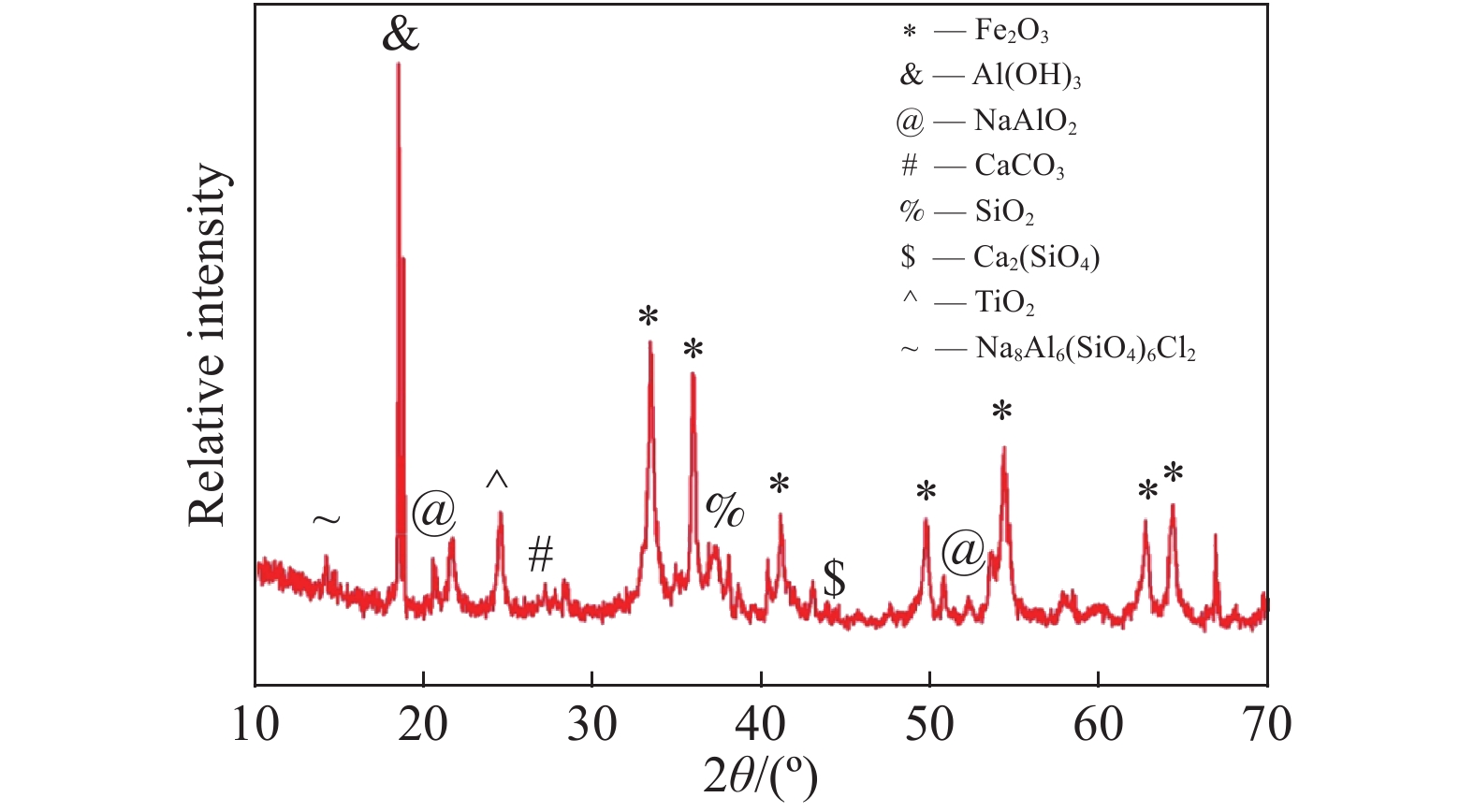
 下載:
下載:
